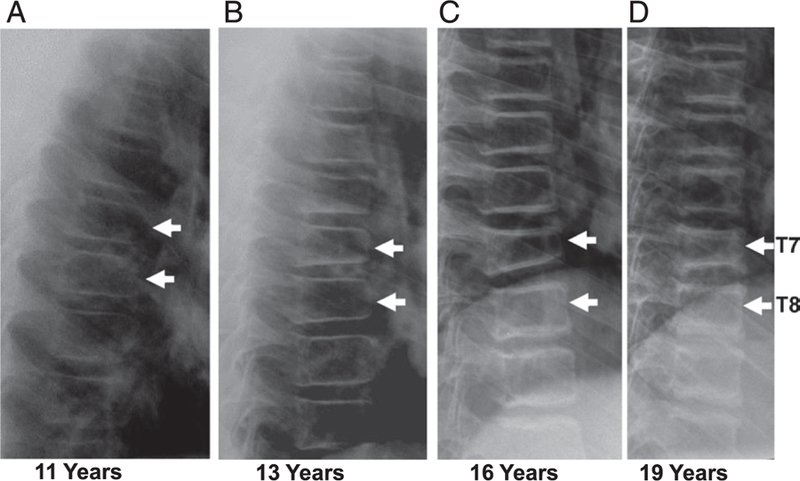FIGURE 3.

The evolution of spine morphology in a patient with DMD treated with glucocorticoid followed by IV bisphosphosphonate therapy for painful VFs. This figure is used to illustrate changes in vertebral morphology during glucocorticoid and IV bisphosphonate therapy. A, Early asymptomatic signs of T7 and T8 VFs on glucocorticoid therapy. B, Progressive vertebral collapse with an emergence of back pain triggering IV pamidronate therapy. C and D, Vertebral body reshaping on IV pamidronate therapy. Vertebral body reshaping is a growth-dependent process that is facilitated by bone strengthening therapy. The extent to which vertebral bodies can undergo reshaping on bisphosphonate therapy is determined by a number of clinical factors, including the degree of collapse, growth velocity, severity of ongoing risk factors for osteoporosis, and the magnitude of residual growth potential (before epiphyseal fusion). Patients with poor growth velocity have less potential for reshaping, as do patients who start therapy with more severe collapse and who are closer to attaining their final adult height. T7, Thoracic vertebra 7; T8, Thoracic vertebra 8.
